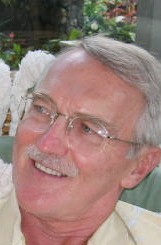- unknown (b.)
Bio/Description
A co-founder with Ralph Ungermann of the networking company Ungermann-Bass (also known as UB and UB Networks) in 1979. UB helped commercialize ethernet, had a successful IPO, and then was purchased by Tandem Computers. In 1972, he received a Ph.D. in Electrical Engineering from the University of Hawaii. His thesis dealt with the design and implementation of UHTSS, a Time Shared System utilized by the UH Computing Center and the ALOHA project. After graduation, he accepted a position teaching Computer Science at the University of California, Berkeley, and in 1975, he joined Zilog as an engineer. Zilog was a microprocessor company led by Ralph Ungermann which developed the Z80; an architecture employed in literally billions of embedded applications. Zilog became a challenging competitor of Intel when in July of 1976 it unveiled the 8-bit Z80 microprocessor, which was faster and cheaper than the 8080. In 1979, he and Ralph Ungermann left Zilog to form Ungermann-Bass (UB), a computer networking company located in Santa Clara, California, in Silicon Valley specializing in local-area networks, particularly in Ethernet technology. Staffed by several of their colleagues from Zilog, UB was the first networking company to deliver computer independent local networks and the first to go public in 1983. UB specialized in large enterprise networks connecting computer systems and devices from multiple vendors, which was unusual in the 1980s. At that time most network equipment came from computer manufacturers and usually used only protocols compatible with that one manufacturer's computer systems, such as IBM's SNA or DEC's DECNet. Many UB products initially used the XNS protocol suite, including the flagship 'Net/One, and later transitioned to TCP/IP as it became an industry standard in the late 1980s. UB marketed a broadband (in the original technical sense) version of Ethernet known as 10BROAD36 in the mid 1980s. It was generally seen as hard to install. UB was one of the first network manufacturers to sell equipment that implemented Ethernet over twisted pair wiring. UB's AccessOne product line initially used the pre-standard StarLAN and, when it became standard, 10BASE-T. UB went public in 1983 but was then bought by Tandem Computers in 1988. From 1983 to 1997, he was also the Consulting Professor of Electrical Engineering at Stanford University. In 1989, he formed Bass Associates, a venture capital company specializing in early stage investments. He was also co-founder of Starlight Networks in late 1990, a software company involved in streaming media and Socket Mobile, Inc. in 1992. He is currently an advisor to Horizon Ventures.
-
Noted For:
Co-founded Ungermann-Bass (UB), the first large networking company independent of any computer manufacturer -
Category of Achievement:
-
More Info:


